Architecture of Networks – Experiment or Reality
Interview by Mirjana Uzelac Filipendin, published in “ArchIntention” (Serbia, April 2013) in the framework of Belgrade ECOWEEK event 2012, in a cooperation with magazine AMBIJENTI – www.ambijenti.rs.
When we talk about the beginnings of one movement and the strength with which activists were striving to achieve their goals, we often forget what happened in the background. Some of us may remember the human rights movement and the effort to bring the change into the society and mind of every human being and how it all ended for some of them. There are still parts of the world where a powerful idea is consider much more dangerous than war. Politicians and economy experts are promoting ideas and practices that are designed for certain people. But on the other hand we are all dealing with same numerous environmental problems in our modern society and living a life that is not in balance with nature. According to Global Footprint Network’s 2012 report, we are already spending five times more than the Planet can regenerate in single year. The question for everyone is: how are we going to architect our own lives, buildings and culture in the future? How are we going to consolidate with our Planet?
Some professions are under bigger pressure than others and architects, as future builders of our cities, are one of them. They need to predict the future, to jump into the time machine and collect the answer or to project few step ahead. There is a real problem and a real need to open the profession towards discussion of and activism for ecologically responsible practices. It is a test for the profession itself.
One example of what some may call an ‘extreme architect’ is Ivan Redi, the partner of ORTLOS Space Engineering. ORTLOS is an architectural studio that explores new possibilities for creating and delivering architectural projects, developing new ideas with a nomadic sense as a major component of future design and implementing the Architecture of Networks as a possible specter of answers to rising problems. The team of experts behind the company experiments with various concepts, ideas and with different collaborative partners. Searching for the better architectural practice of tomorrow and alternative options for prospective professionals ORTLOS takes its place in the creative industries as a visionary studio.
Work of the ORTLOS Space Engineering studio is characterized by innovative approach to the architecture and space. Design solutions with dynamic creative energy and design that follows the attitude, reactions and connection with the users. Please explain to us the principle of ‘form follows feedback’.
“Form follows feedback” is a term coined by William Mitchell. We apply it to so called “performative architecture”. The architecture nowadays became complex network of interconnected dependencies and the recent discussion of formal or functional issues tends to be obsolete. In other words, more important than functional or formal aspect is the performative one. Like in automotive industry, if you want the perfect form for your new car just bring it into the wind tunnel and change the design according to simulation results. This is of course simplified, but we need to figure out what the “doing does” – to us, to the environment, to the planet. The prosperity, the people and the planet need to be in balance. We need to understand that our build environment has a huge impact to the sustainability of the world. So the feedback we get from the simulations and evaluations we need to loop back into the system. The feedback feeds the design process. The design process happens in trans-disciplinary teams. However, this should not be mixed with concepts of participations from 70’s, where everybody does everything. We are talking here about teams of experts which of course include users but only in a specific role, as a team member. Such trans-disciplinary teams would include architects, urban planner, environmentalists, engineers, but also philosophers, sociologists, artists, politicians, and others. Other topics we draw from the “form follows feedback” principle are so called “on-demand spaces”. I think that we have adapted enough ourselves to the architectural spaces and environments. The time has come that spaces adapt to ourselves – on demand – as we need them. Through modern technologies and advanced IT, it is already possible to do so and in the future will be even more.
The resource of the future is information and the pursuit of the modern society is the dynamics, the flow without permanent places. In what way new architecture is capable to unite these two facts?
As Daniel Libeskind said there is no space at its place. We are all in one way or another “ortlos” (without place, placeless). We are all more nomadic then we think. This condition is not connected to our physical movement. A big part of our living and working environment is built out of information. Information is a new brick. I believe that the future of the architecture is in dematerialization. This is not only because we build enough and now we need to be careful about the resources which are left. But it means that architectural practice needs to be changed. The current way of doing architecture is, simply said, dried out. On the other hand the expectations on architecture for solving problems are very high and at the same time the common sense in public about architecture as cultural or sociopolitical phenomena are very low. However, there is no other discipline which can be more beautifully schizophrenic in combining and orchestrating the things almost impossible to unite. So we need to be confident that a new fields and new opportunities will open up for the profession. Therefore, we need new methods, strategies and tools to cope with future requirements and development of our physical and virtual environments.
Innovative architecture and the Architecture of Networks as a next step of architectural profession explores the phenomena of the present and together with the force of the information represents the disobedience to the profession and current dogmas. What are the changes that are facing prospective professionals and society in general?
The current society is characterized by ambiguity, contradiction and infinite complexity. And the information it produces grows every day exponentially. The big data issue is not problem only for IT world and everyday life. The architects are overwhelmed with information and data they need to process in daily practice too. Just to understand different concepts and technologies of cooling or heating systems of the building connected to the energy-efficiency issue (low energy, passive and active house, etc.) developed itself to own science. The reason why the financial crisis happened is that many experts have understood the new complicated products and procedures for themselves, but they didn’t quite understand their interconnection and how these influence each other. Compared to this situation we have similar problem in architecture. Good news is that we don’t have to understand anymore what all of these things mean per se (because we can’t), but we have to understand how they are interconnected through their lifecycle. With other words how everything is connected to everything. That is a moment when “Architecture of the networks” comes in. It describes methods, strategies and tools how to deal with such complex issues in more productive way. So innovation in architecture is not anymore about finding something radically new, but figuring out how the things we already have are interconnected and what is then their performance. This of course changes architectural profession and the current mind set.
When you are talking about Urban informatics and territorial modeling you introduce the principles of Artificial Intelligence (AI), Neural Networks (NN) and Cellular Automata (CA) as a potential that will provide appropriate results to spatial distribution of urban activities. What inspired you to establish a connection and search for answers to more efficient urban planning in the field of mathematics, computer science and modeling?
In Urban Informatics we deal with agents, it doesn’t matter if we mean persons or software agents. We borrow mathematical and computer science models for urban design, in order to better understand and more successfully describe the complex processes of collective behavior in urban environments. We are facing challenges for which we need the help of advanced models so we can, to some extent, predict actions of so called “collective intelligence” and feed our simulations with this data. The classical tools of urban planning such master planning and zoning are happening to be insufficient and even obsolete in 21st century. Land use dynamics and fragmentation of settlements is a crucial question for urban planning. In the general framework of sustainability objectives, the policies that control a suitable process of urbanization increasingly involve a deep knowledge of complex criteria of location chosen by the different agents. Planners realize that it is crucial to understand and provide the best possible explanation for the observed spatial distribution of urban activities.
Your research and works (Urban Eco-System, Bayernoil) regarding the future cities indicate that the strict implementation of known principles of sustainability in future projects is simply not enough. What is the set of responsibilities and questions that the future architecture and urban planning needs to meet?
Beyond the traditional notion of the architect as a designer of forms and functions for the buildings, the architects need to become designers of eco-systems. These systems of both ecology and economy are maintained not only by the flows of people but also by the flow of resources like information, energy, waste and matter. They also incorporate the human consumption patterns into our natural environment. We need to provide pro-active solutions in search for future developments, which are not only limiting and restrictive to the current life-style in order to achieve sustainability and human-nature equilibrium.
Our project, for urban development of the formal Bayernoil site in Ingolstadt, is focused on understanding how cities work as ecological system and how sustainable structures can increase the quality of urban life. The task is developing sustainable approaches to development of city fringe areas that reduce negative affect surrounding environments, as well the development that provide health and opportunities for citizens. In that sense, the optimization of the whole system through a complex, diverse design of a densely interconnected and symbiotic structure with closed loop flows of resources toward a “zero waste system”, is a crucial performance of urban ecosystem.
What are the characteristics of mutual connection between regenerative designed urban eco-structures and biomimicry cities with natural surroundings?
The term “regenerative urban design” describes processes where people intentionally participate with nature and actively co-evolve the whole system, thereby creating urban systems that incorporate the needs of society with the integrity of nature. Regenerative design can be understood as the examination of nature, its models, systems and processes to emulate or take inspiration from in order to solve urban problems. It is the biomimicry of ecosystems that allow for all human systems to function as a closed viable ecological economics system for all industry. Regenerative-designed urban structures are holistic frameworks that seek to create a lifecycle intelligence of buildings in urban environments through structural efficiency, zero waste systems, intelligent water use and thermal environment, and solar energy supply toward biomimetic cities. Goal of such design is to redevelop systems with absolute efficiency, which allows for the co-evolution of the human species along with other thriving species. The growth of the urban population and the supporting built infrastructure has affected both urban environments and the areas which surround urban areas. These include semi or “peri-urban” environments that fringe cities as well as agricultural and natural landscapes.
We are interested in eco systems in their whole life-cycle. And we have realized that sustainability is not enough. I am not sure if we have realized. The news are rather confusing. We are kind of sensing that the system we have right now is actually not sustainable and our habits need to change radically (which was also motto of ECOWEEK). Furthermore, we discovered, for example, that the modern wooden construction is not quite ecological, because of too many steel joint connections and embedded energy caused by transport. So what have we realized is: all that we have been thinking about, until now, is not quite so as we thought that it is. Again we are coming back here to Architecture of the networks and ideas we have discussed previously. The main argument is therefore that we need to understand eco-systems in their whole life-cycle. By considering urban areas as part of a broader ecological system, it is interesting to investigate how urban landscapes function and how they affect other landscapes with which they interact. In this context, urban environments are affected by their surrounding environment but also affect that environment.
If you would have to set a priority for architects of the future, what task would it be and why?
This question is not easy to answer, simply because I constantly change my mind. That is reflected by our architectural practice. If you would check our website www.ortlos.com you would find a huge diversity of projects presented with no emphasis on particular style. In our upcoming book “The Emergence of Networked Thinking and Design” we will try to summarize the architectural theory and production, which is increasingly being equipped to deal with the complexities of contemporary networked space, developing new forms of practice and exploring new levels of complex spatial conditions and contexts within computational and actual environments. The book should provide guidelines to better communicate what architecture can really do, to significantly improve human environments in any regard. After we truly understand how the things are interconnected, the strategic planning and the energy-efficiency are the next two big domains. There is much work to be done here.
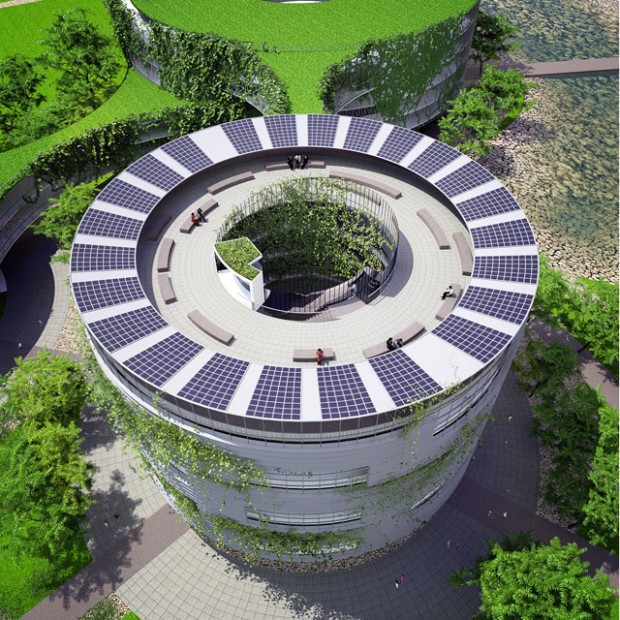
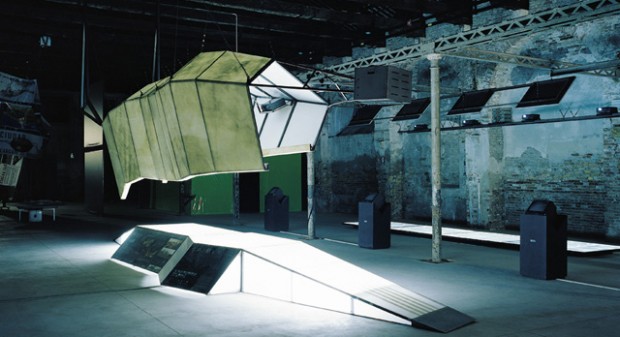
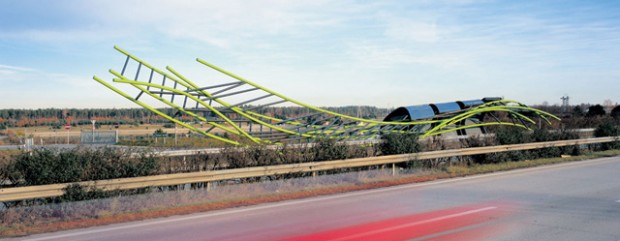
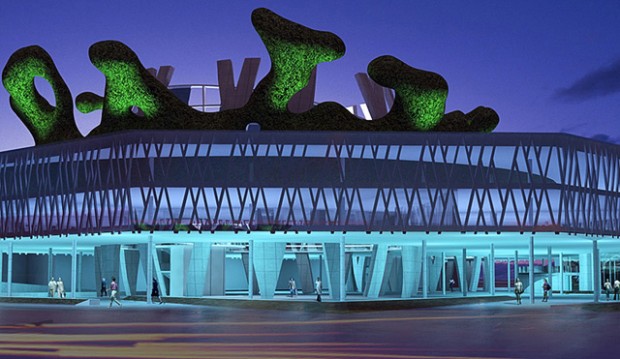

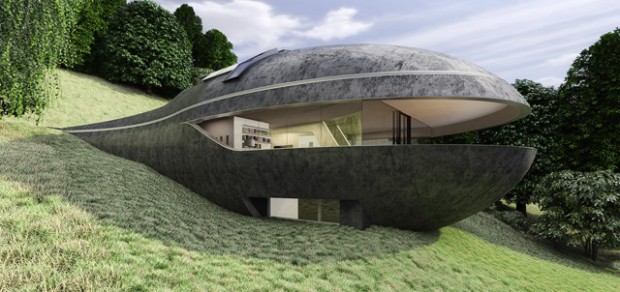

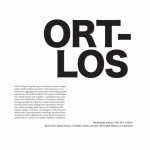
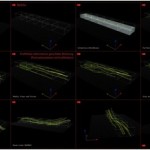








You must be logged in to post a comment.